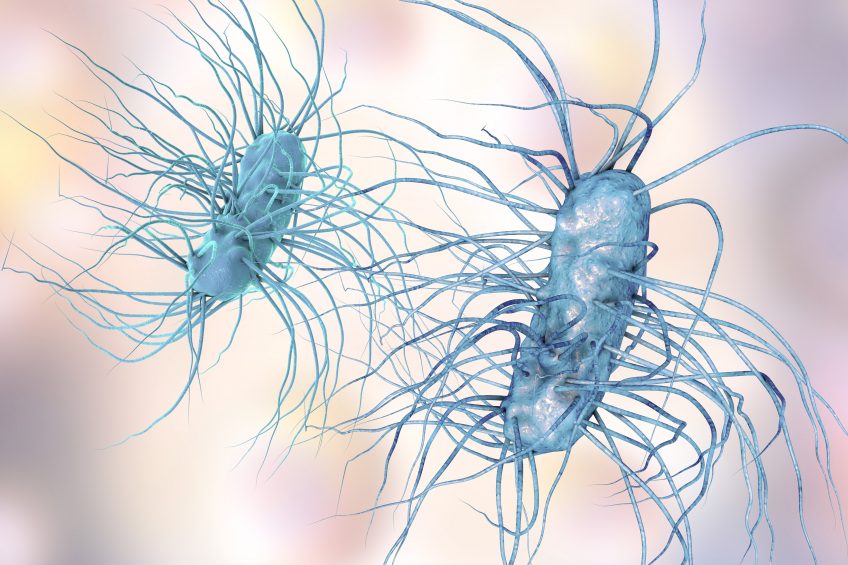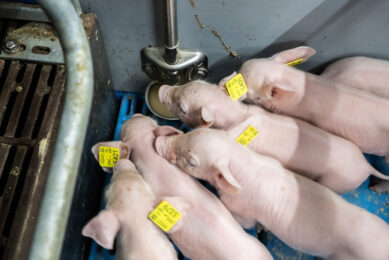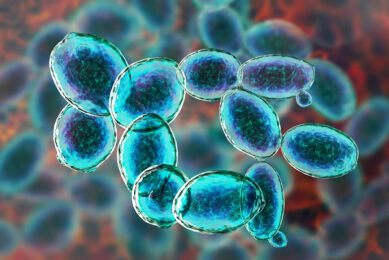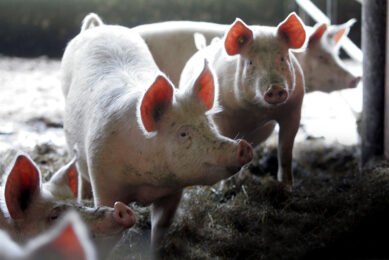Livestock ESBLs and human ESBLs are not the same

Meat consumption does not necessarily lead to ingestion of antibiotic resistant bacteria. Instead, humans tend to transfer these resistant bugs themselves, according to new research from the Netherlands.
The research (in Dutch) focused on Extended Spectrum Beta-Lactamases (ESBLs), enzymes that can degrade certain types of antibiotics. A well-known bacteria capable of producing ESBLs is E. coli. The study was a broadly supported effort, carried out by Wageningen University & Research Centre, Utrecht University, the Netherlands National Institute for Public Health and the Environment (RIVM), academic hospital UMC Utrecht and the Animal Health Service (GD).
Penicillins and cephalosporins
It becomes more difficult to treat animals and humans with antibiotics like penicillins or cephalosporins, in case these persons are infected with bacteria capable of creating ESBLs, the researchers wrote, explaining the context of the research. In addition, bacteria are capable of passing on DNA information, allowing other bacteria to also produce ESBLs.

Find out all there is to know about pig health using Pig Progress’ unique Pig Health Tool
The study zoomed in on how this distribution works in practice. In total, the researchers looked at 39 different types of sources and concluded that ESBLs can be found anywhere – in animals, humans, and the environment. About 5% of humans are carriers of ESBLs, they found. They do not always fall ill, but are capable of infecting other humans. ESBLs were also found in pigs, pets, waterfowl, poultry and beef cattle.
Humans are infected by other humans
After genetic analysis it became clear that ESBLs in sick humans resembled those of healthy humans – more than those in livestock and meat.
That was an indication that humans are mostly infected by other humans and not so much by animals or meat. In addition, meat does contain ESBLs, but chances for contamination are minimal if it is prepared hygienically and is cooked well.
Exception: livestock producers
Poultry and pig producers as well as slaughterhouse employees were found to be an exception in the sense that they do have a higher risk to be carrier of ESBLs. The types of ESBL bacteria did show a strong similarity with those in their own livestock and differed from those of other members of the population. This suggested that contact with livestock is the most probable route of transmission.
This was reflected in the fact that 27% of the people working in pig production are carriers of ESBLs, quite a difference from the approximate 5% of the whole of society in the Netherlands. This is linked to both contact with animals as well as transmission through dust.
The researchers also looked into the environment, as water in rivers or creeks often contain leftover ESBLs from sewers or manure. Of all samples, 67% tested positive for ESBLs. Nevertheless, the study concluded that chances of contamination are relatively minimal as concentrations are low. Neighbours of livestock operations may also be in touch with ESBLs through air – they appeared to have a higher chance of being a carrier of the enzymes.
Bacteria vs antibiotics
The researchers concluded that the production of ESBLs by bacteria is the result of a continued ‘armed battle’ between bacteria and the antibiotics that are being used to contain them. Responsible usage of antibiotics in both human as well as animal medicine should be an important measure to reduce the spread of ESBLs, they concluded.
 Beheer
Beheer








 WP Admin
WP Admin  Bewerk bericht
Bewerk bericht